
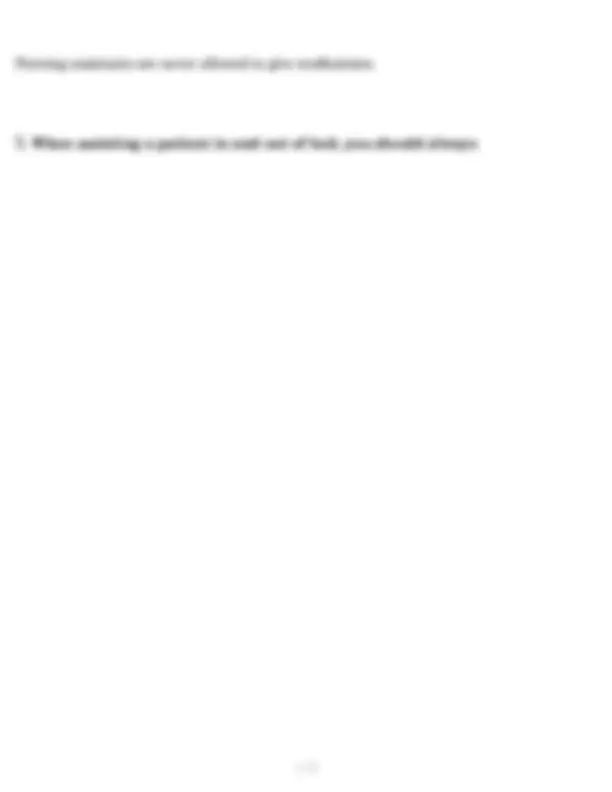
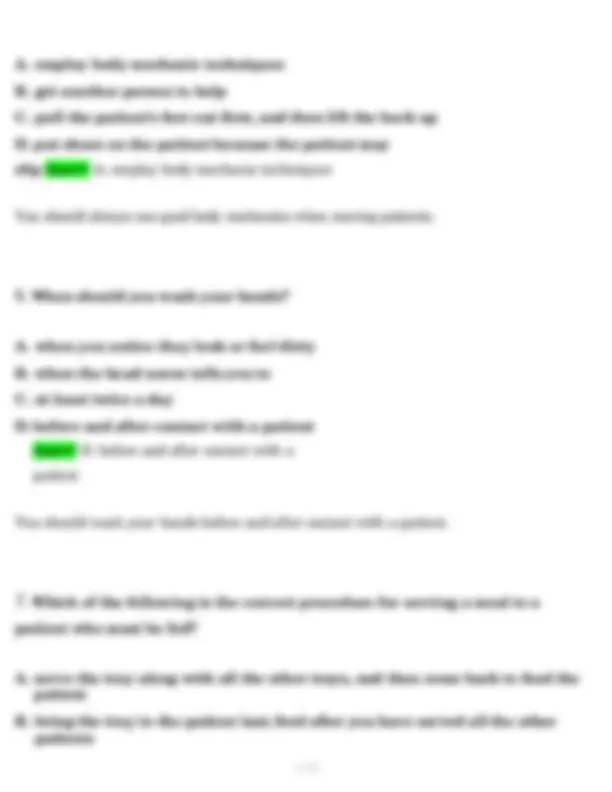
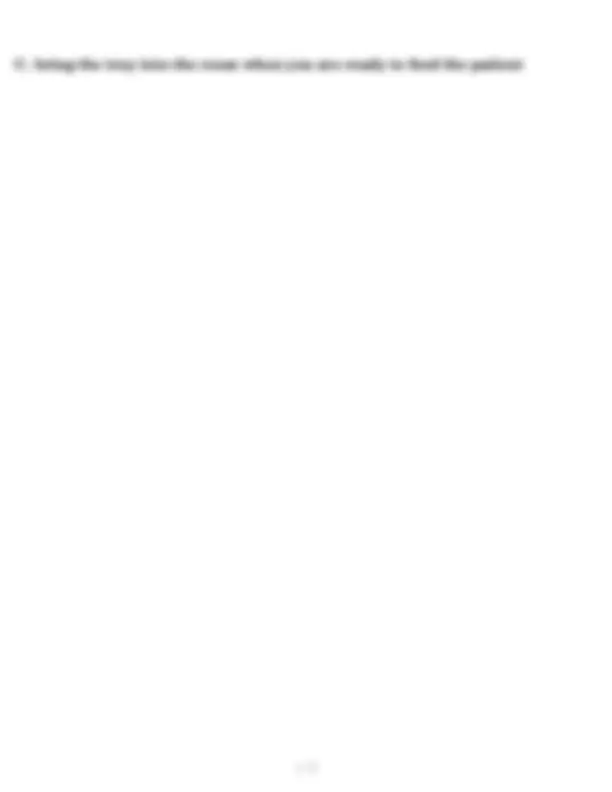

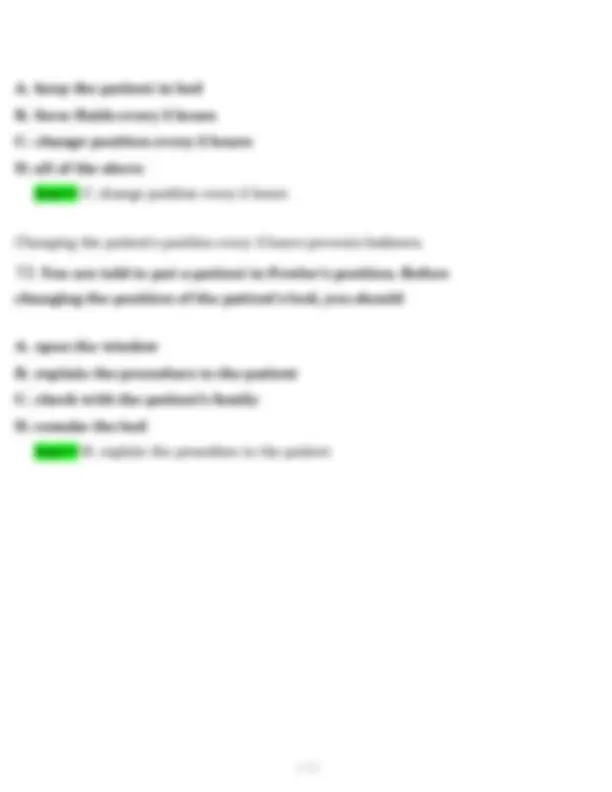
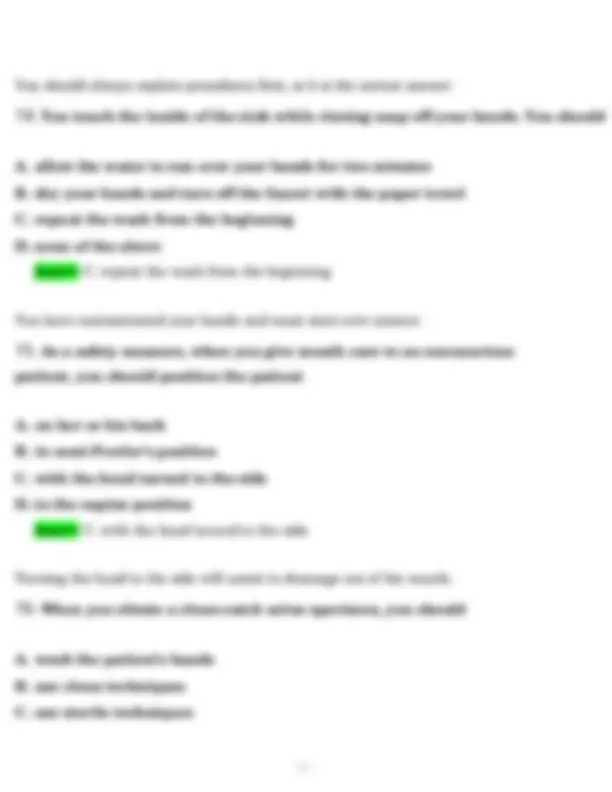

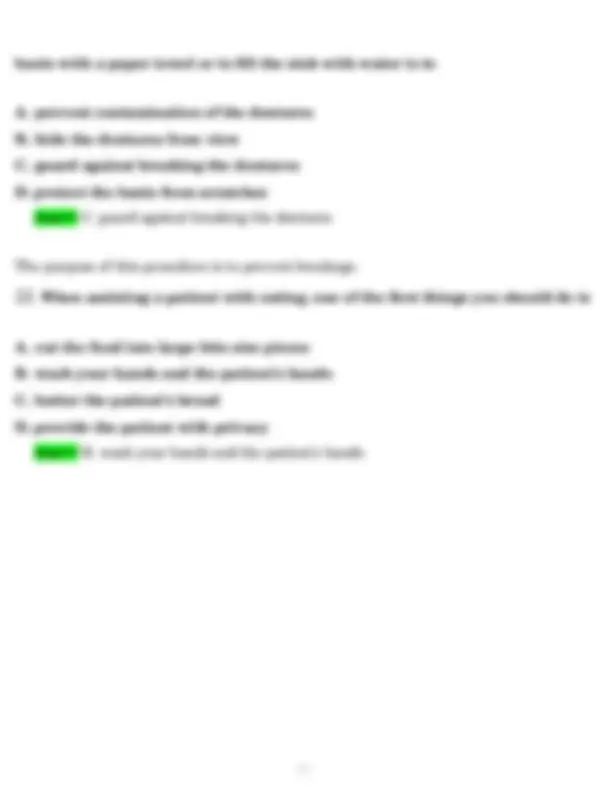
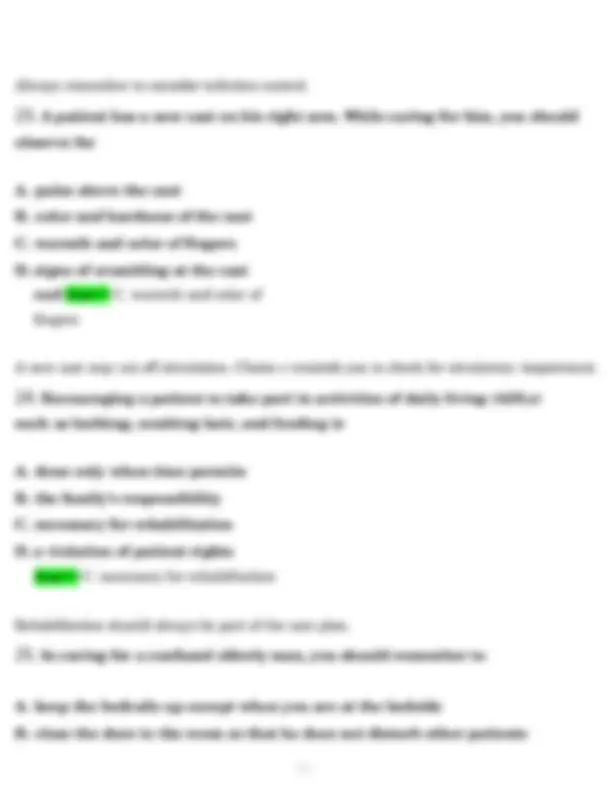
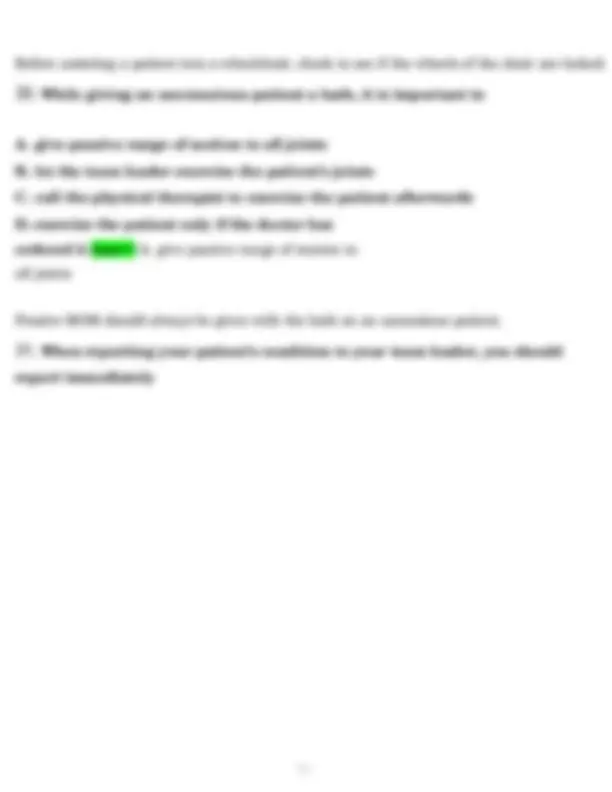
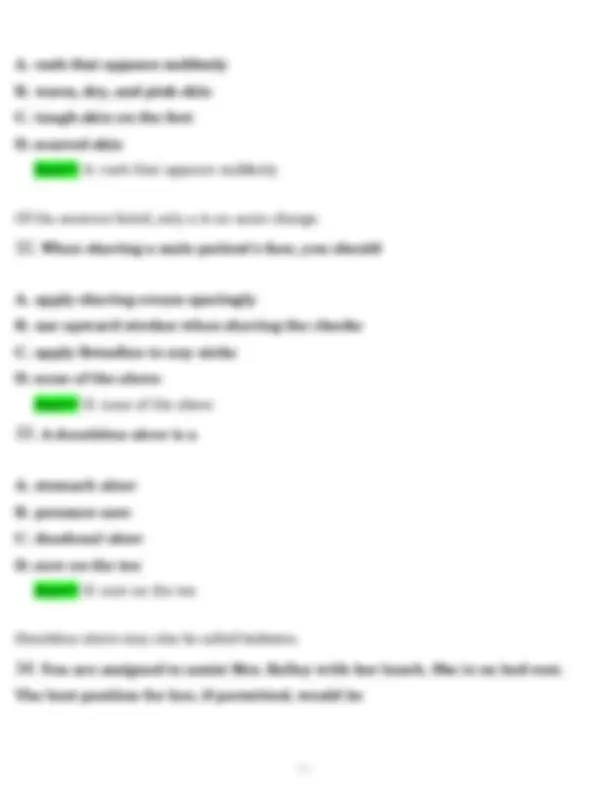
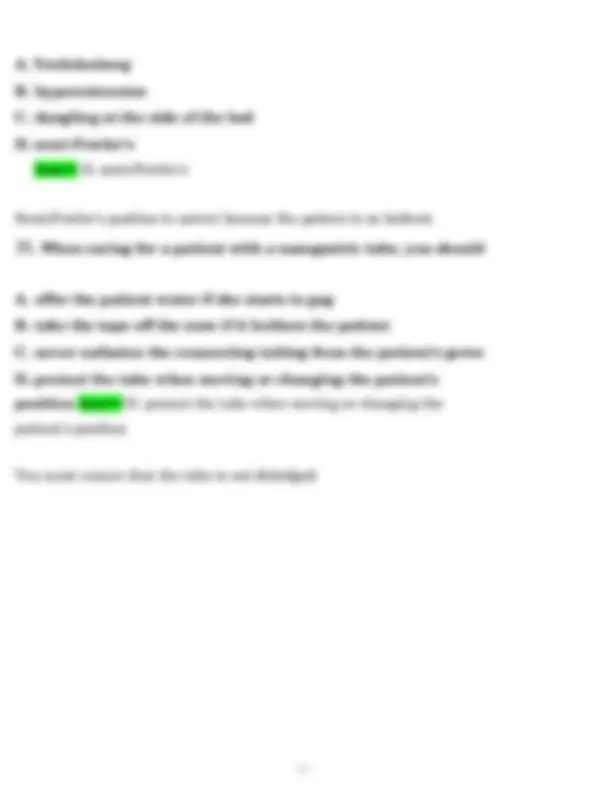
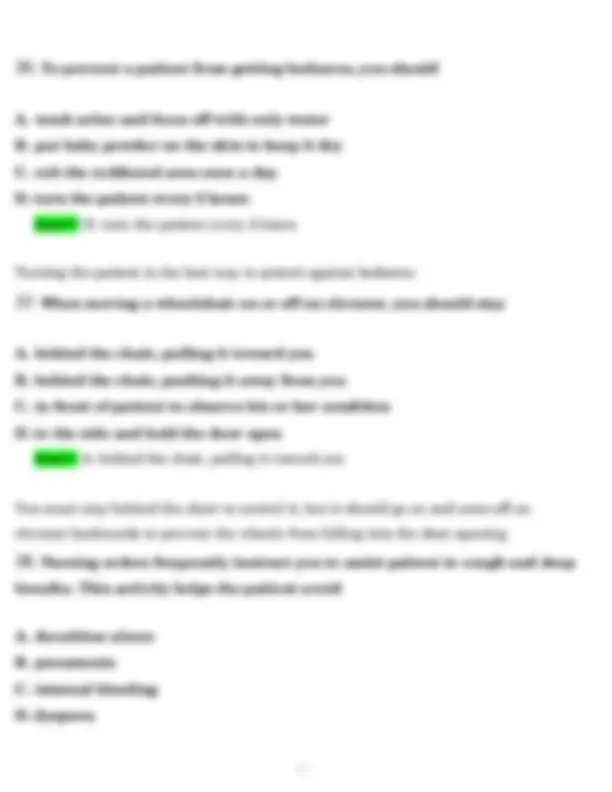
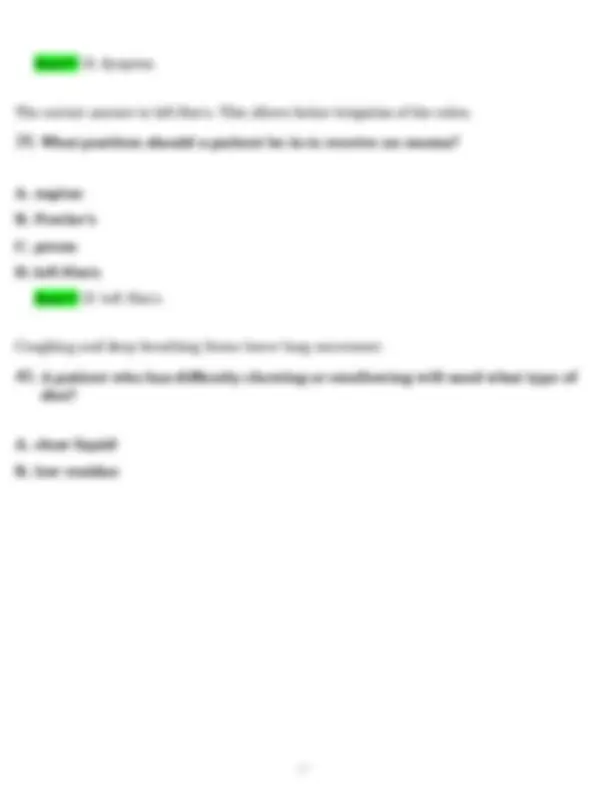
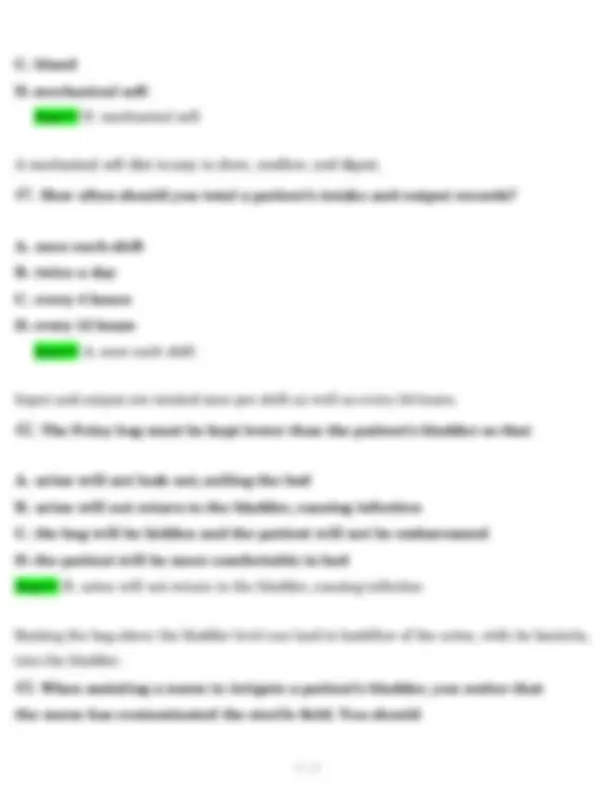
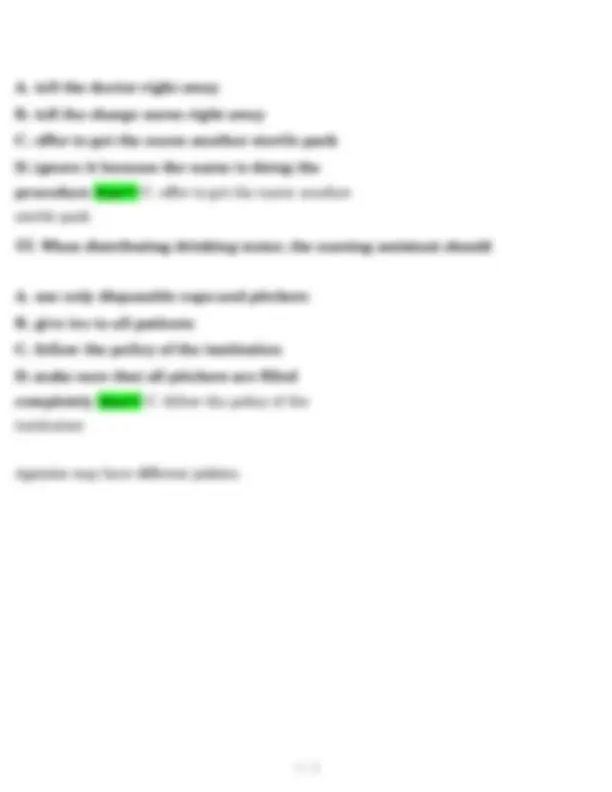
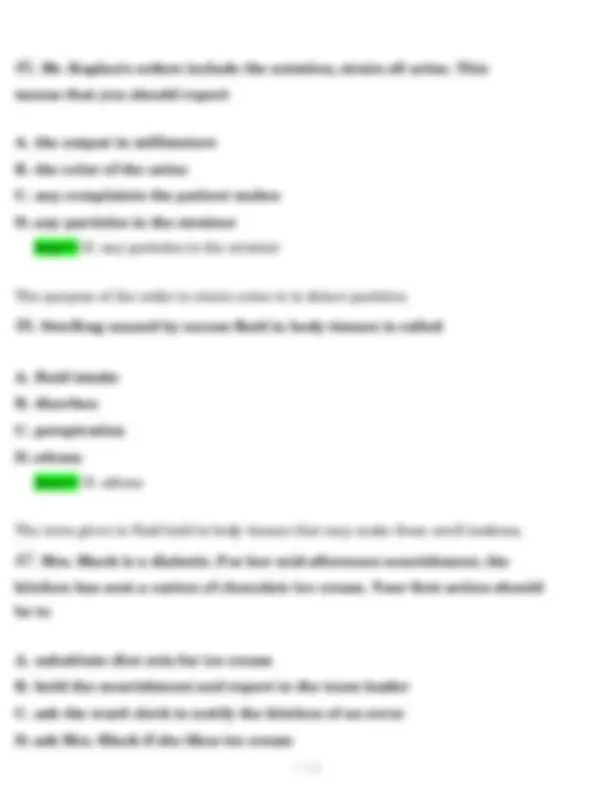
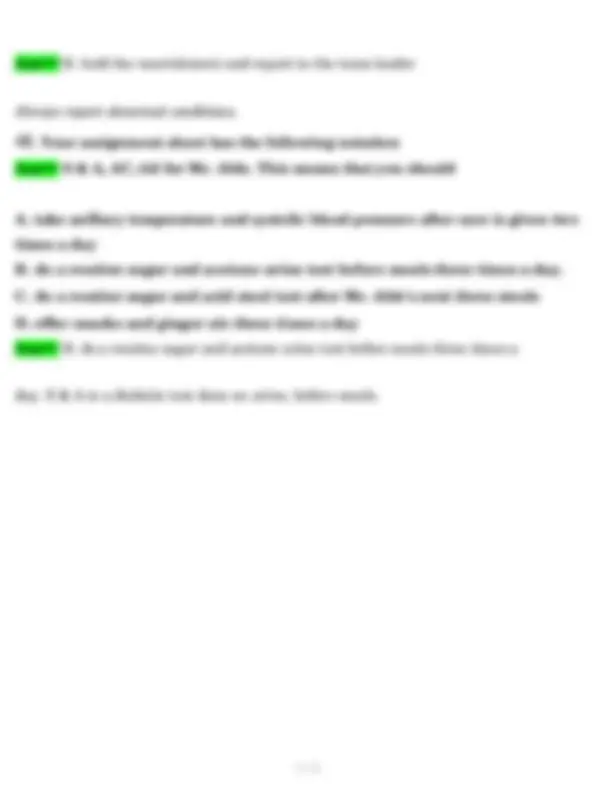
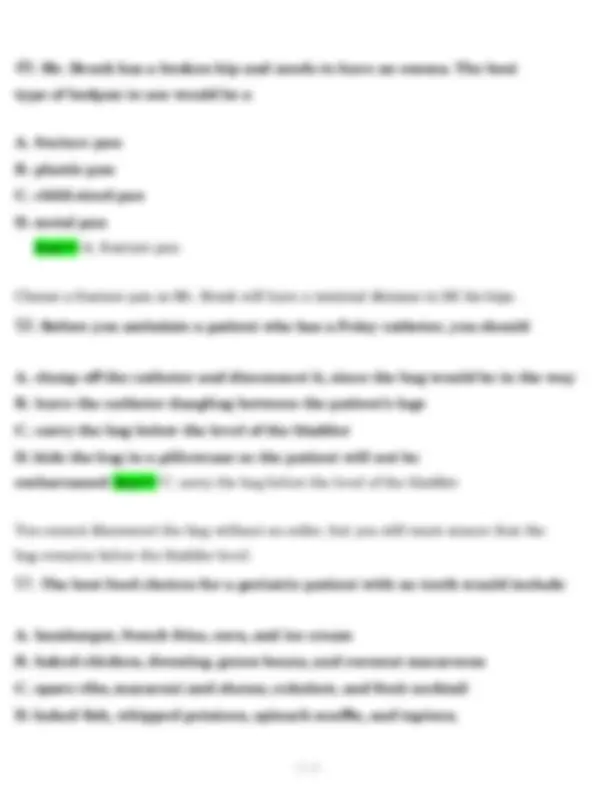

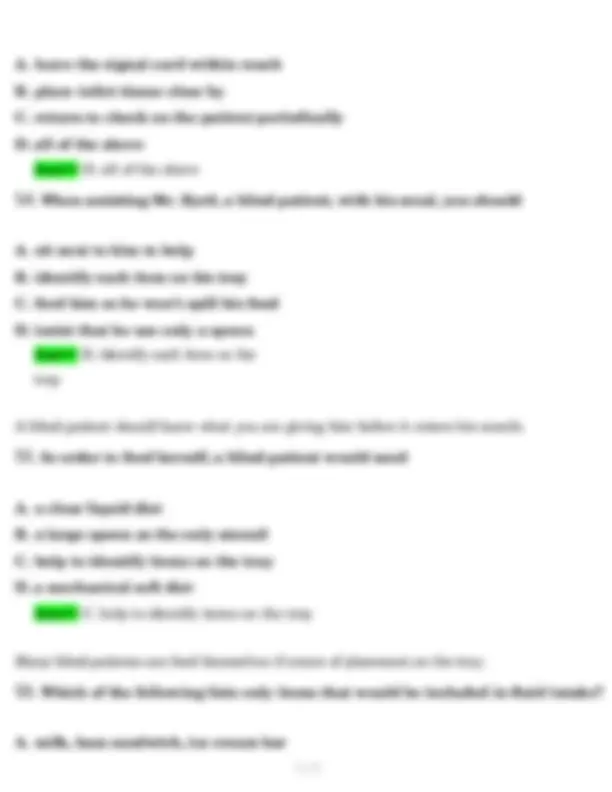
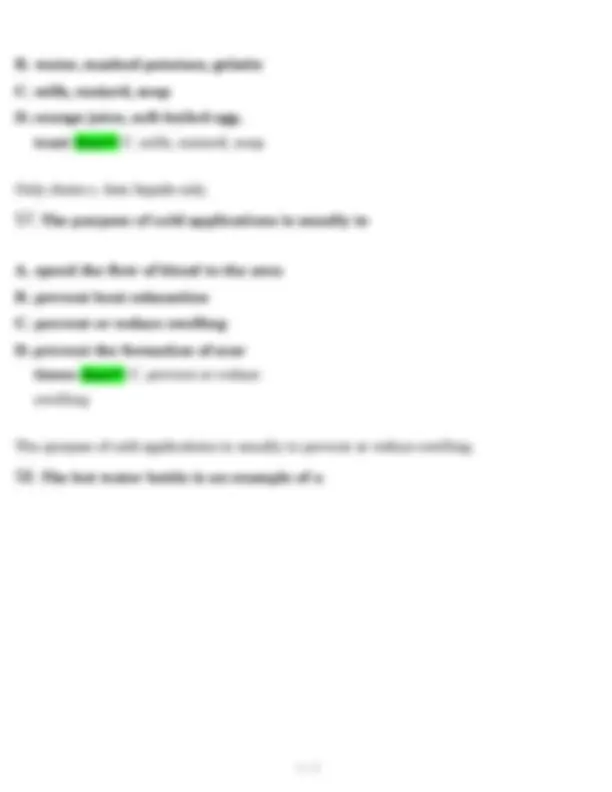
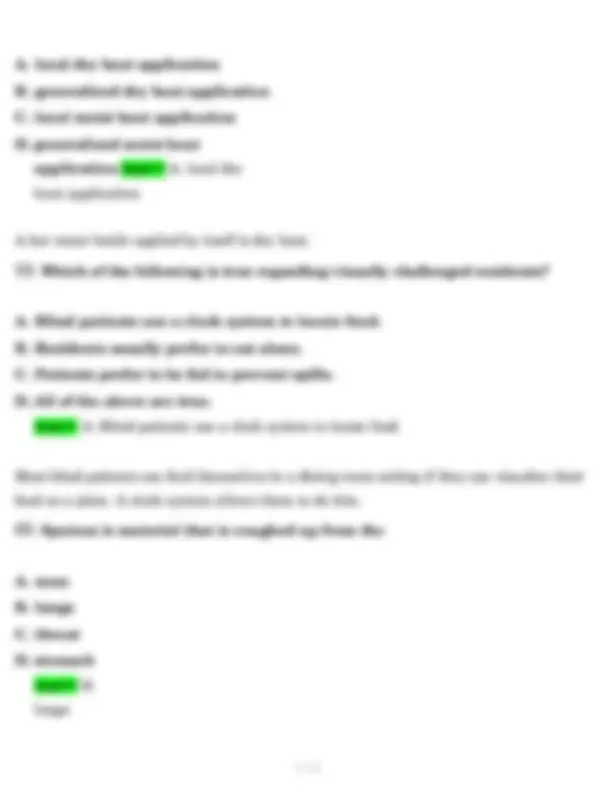

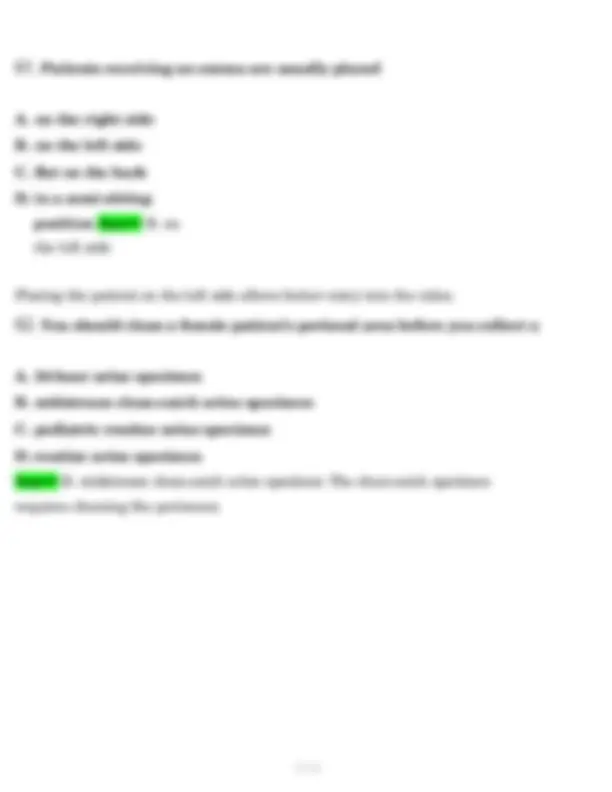
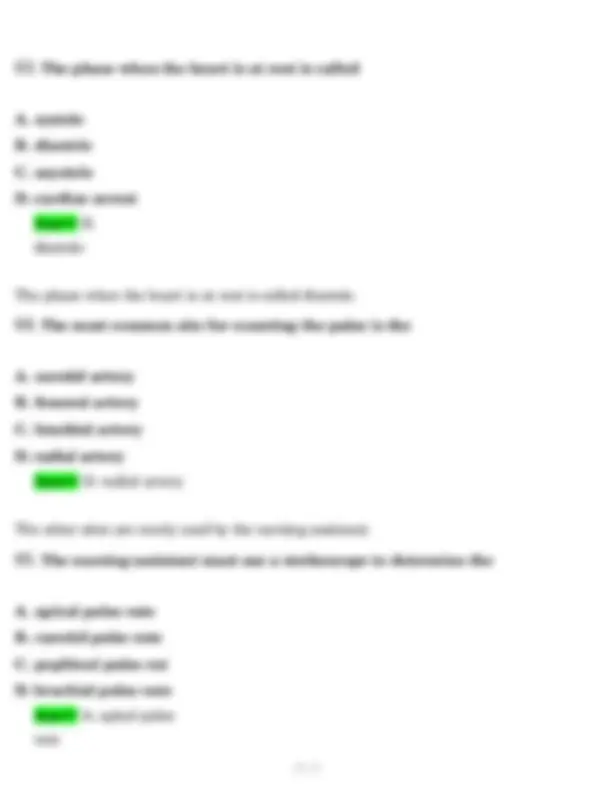
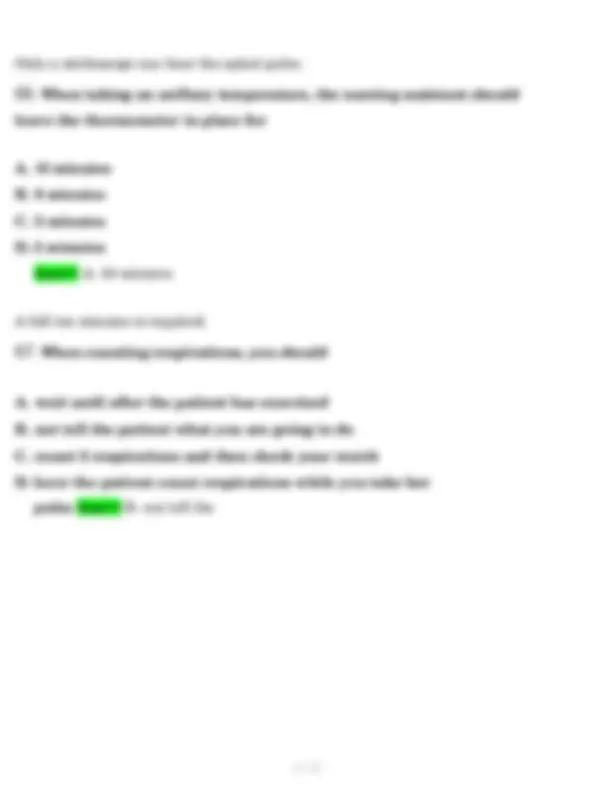
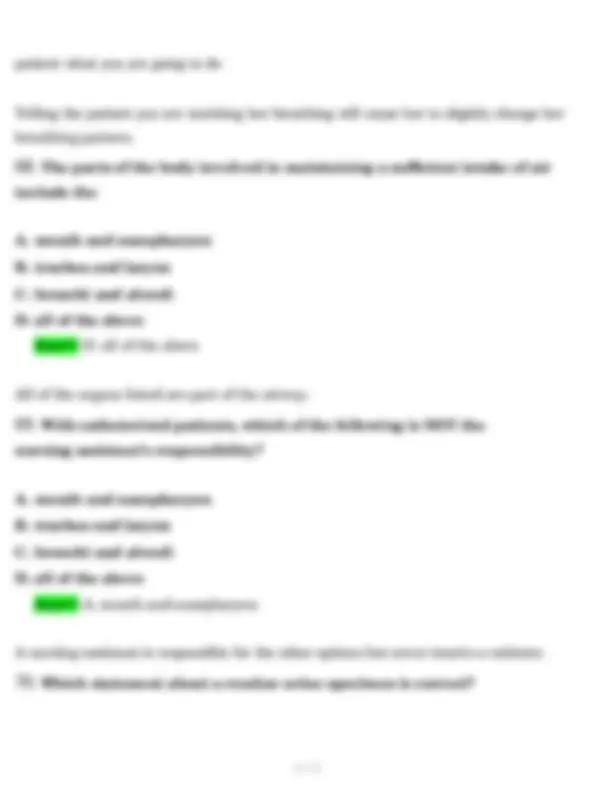
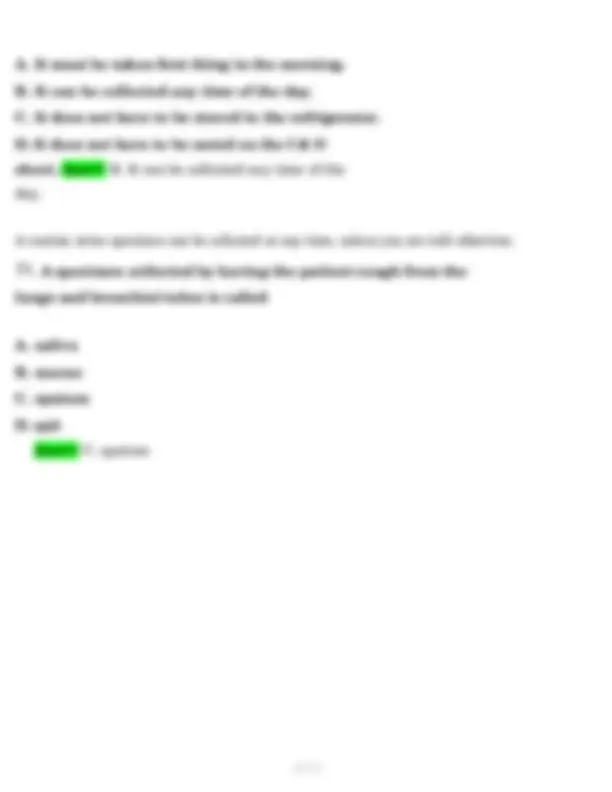
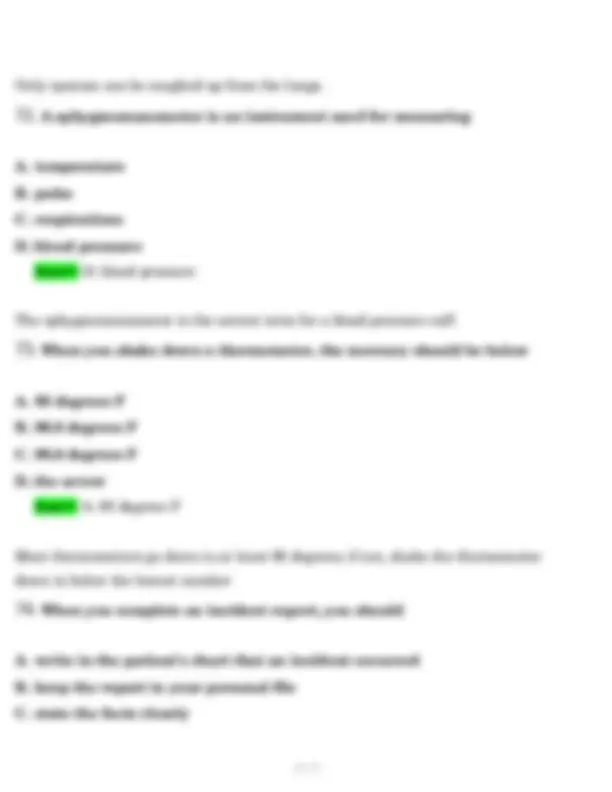
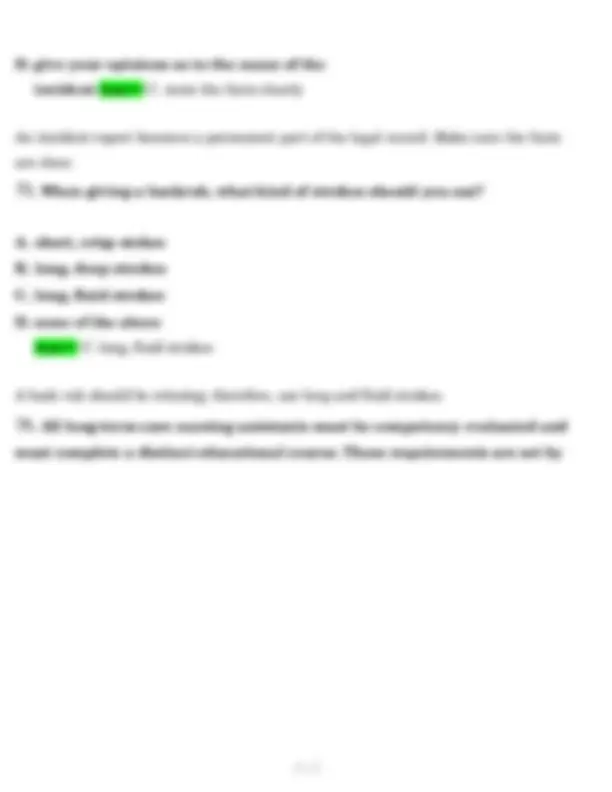
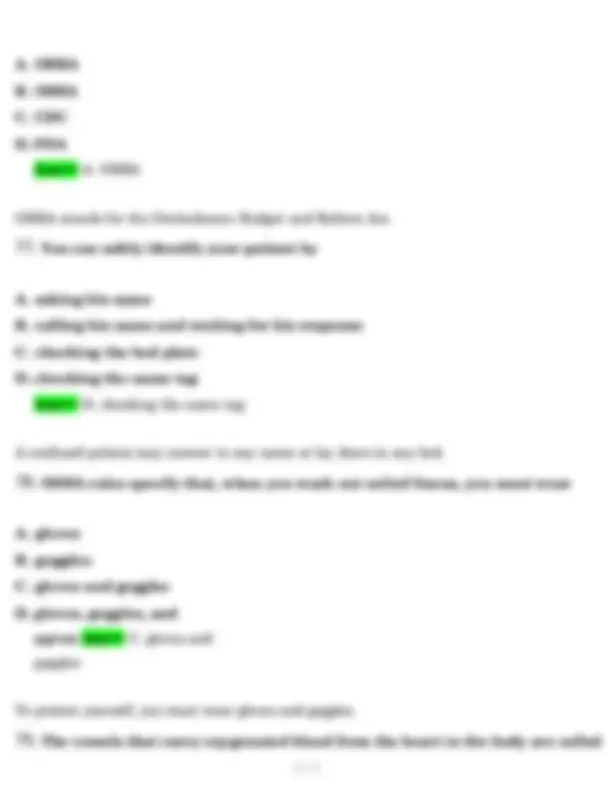
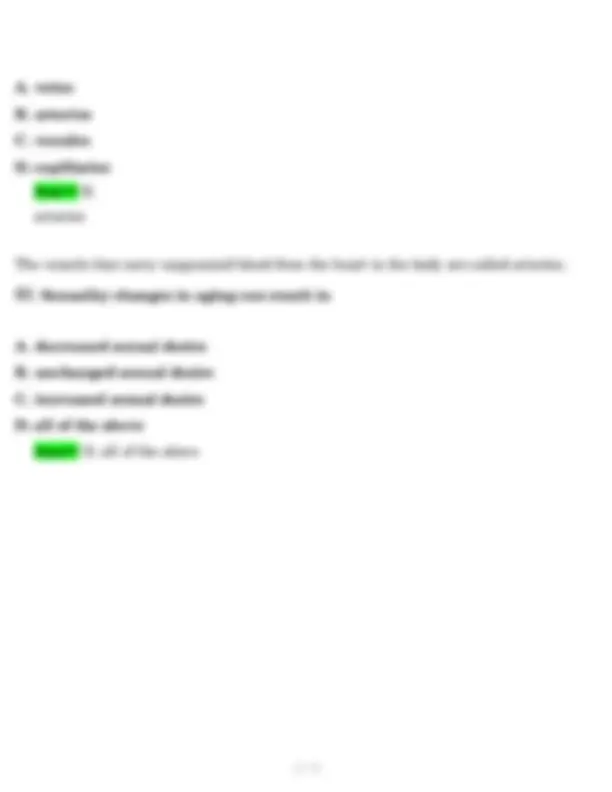
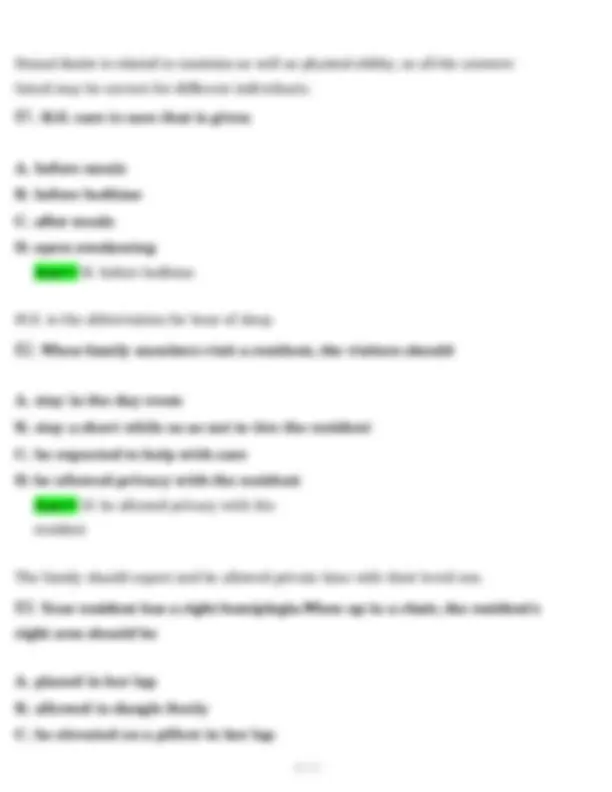
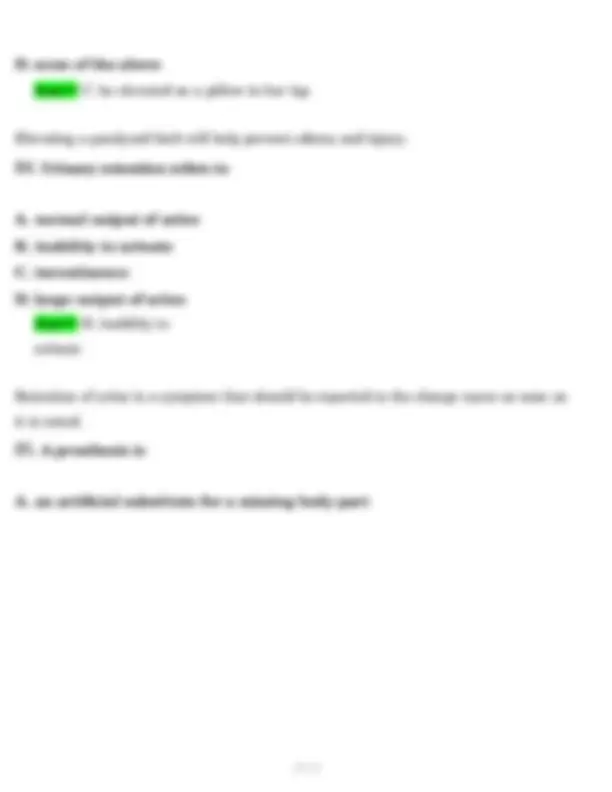
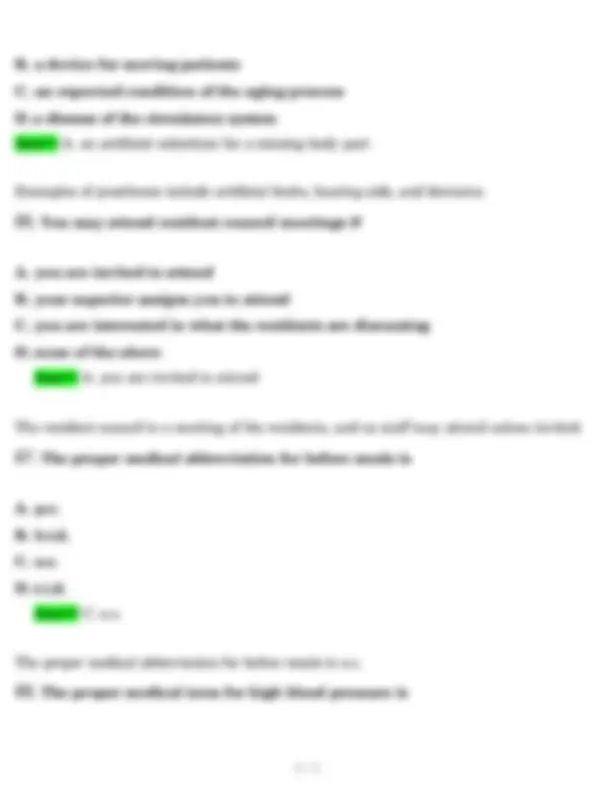
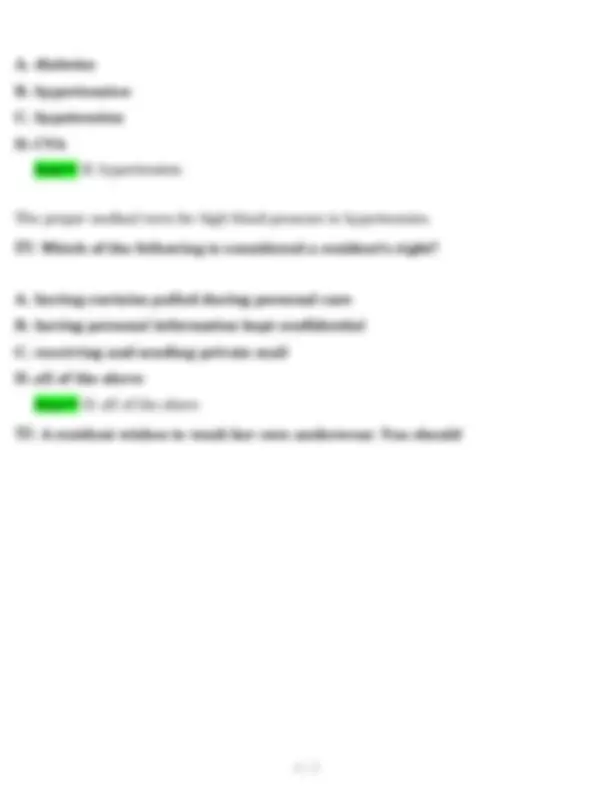
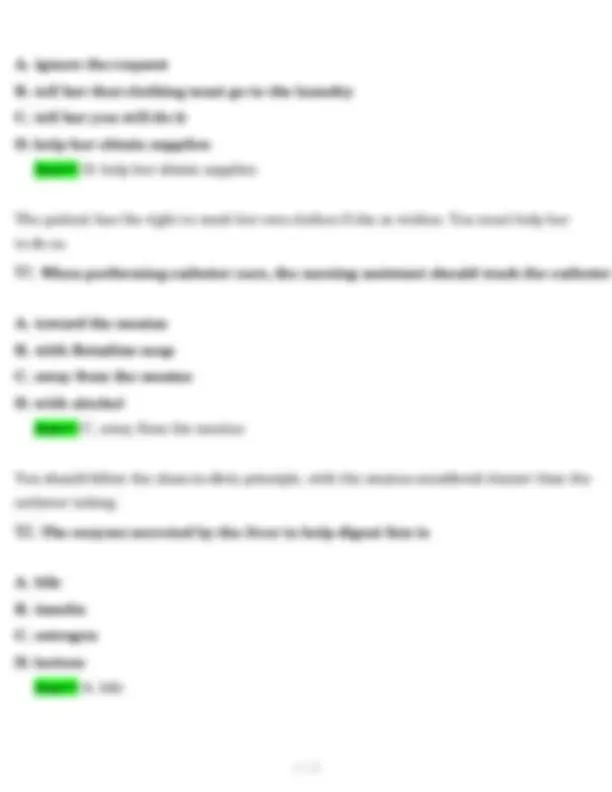
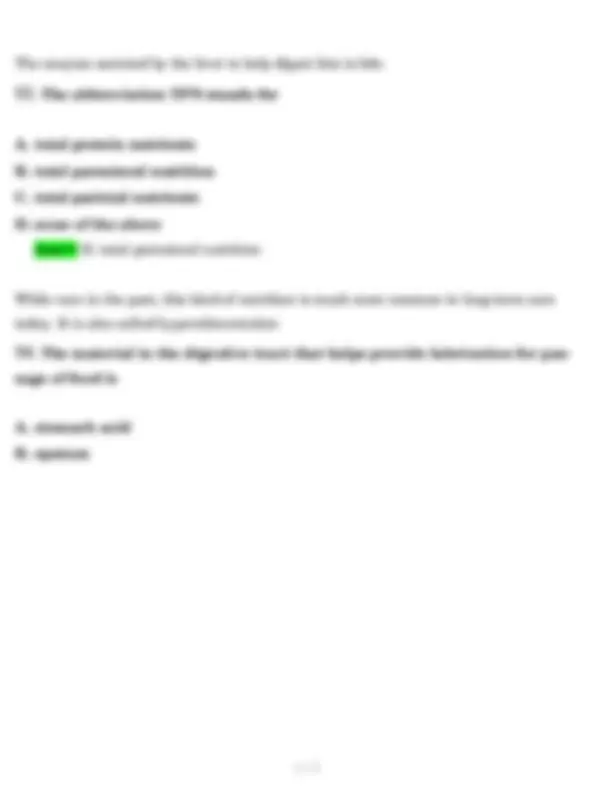
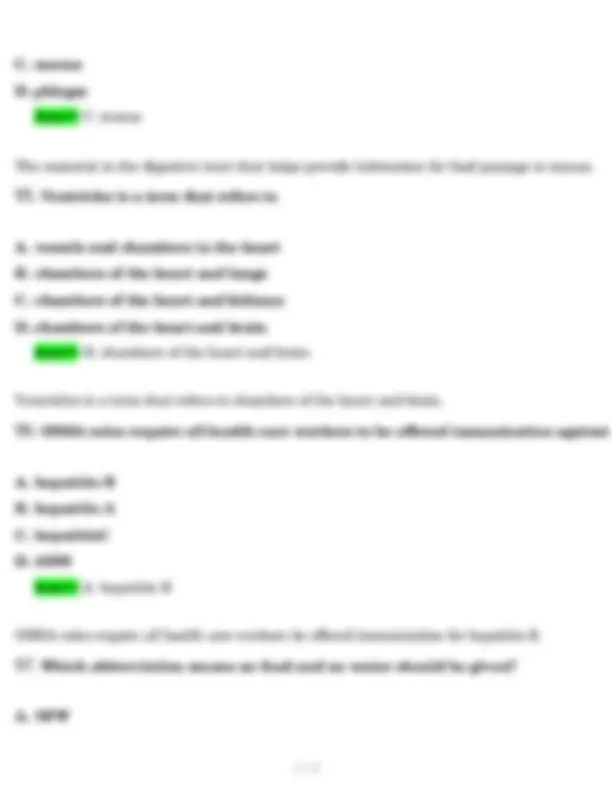
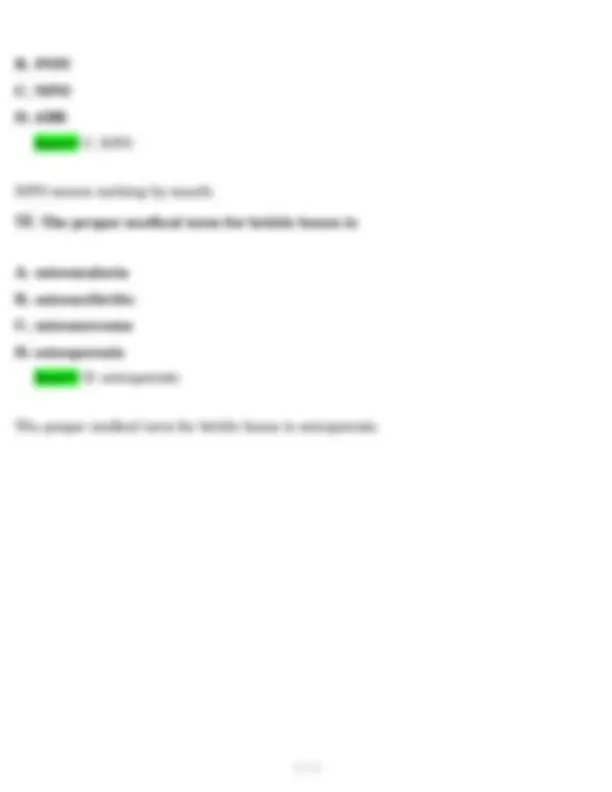
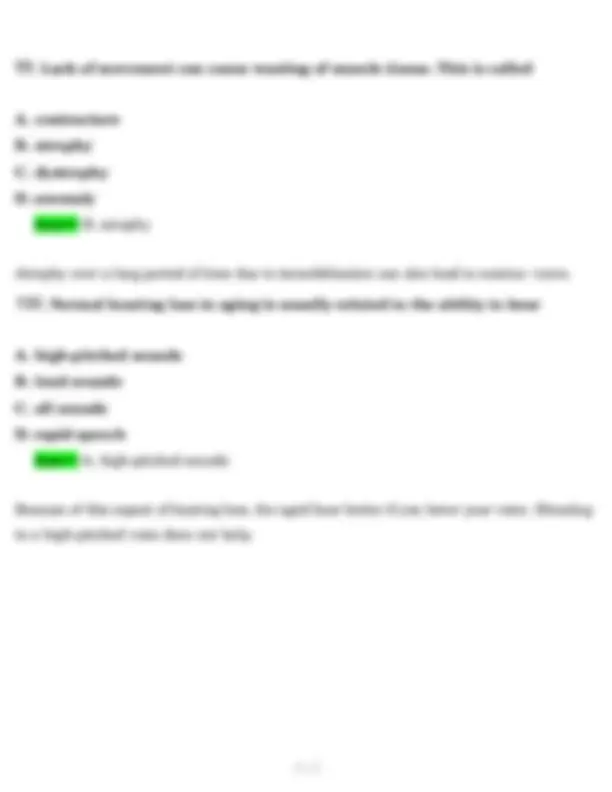


Study with the several resources on Docsity

Earn points by helping other students or get them with a premium plan


Prepare for your exams
Study with the several resources on Docsity

Earn points to download
Earn points by helping other students or get them with a premium plan
Community
Ask the community for help and clear up your study doubts
Discover the best universities in your country according to Docsity users
Free resources
Download our free guides on studying techniques, anxiety management strategies, and thesis advice from Docsity tutors
Certified Nursing Assistant Final Exam Questions and Answers (A+ Verified Full Exam) 1. CNA final exam practice questions with answers 2. Certified Nursing Assistant exam study guide with verified answers 3. A+ verified CNA final exam questions and explanations 4. Comprehensive CNA final exam review materials 5. Last-minute study tips for CNA certification exam 6. Free CNA final exam sample questions and answers 7. Certified Nursing Assistant test prep with full exam simulation 8. Most common CNA final exam questions explained 9. Step-by-step CNA final exam answer breakdown 10. CNA certification exam questions by topic Difficult CNA final exam questions with expert solutions Certified Nursing Assistant exam passing score requirements CNA final exam time management strategies 14. Real-world scenarios in CNA final exam questions CNA final exam question types and formats explained Best online resources for CNA final exam preparation CNA final exam retake policy and procedures
Typology: Exams
1 / 50

This page cannot be seen from the preview
Don't miss anything!











































admitting a patient? A. color of the stool and amount of urine voided B. how much the patient has eaten and drunk C. bruises, marks, rashes, or broken skin D. requests the patient makes Ans>> C. bruises, marks, rashes, or broken skin Failure to notice bruises or marks on the skin on admission may later cause someone to believe you were involved in abuse.
A. ask for the patient's name B. say, May I help you? C. give your name and position
D. say, The nurse will answer your call Ans>> C. give your name and position When responding to a patient on the intercom, you should give your name and position.
with his or her surroundings? A. show the patient where the call bell is and how to work it B. tell the patient not to operate the TV C. ask visitors to leave the room while you finish admitting the patient D. raise the side rails of the bed and raise the bed to high position Ans>> A. show the patient where the call bell is and how to work it You should never leave a new admit until the patient knows how to call for help.
A. check signal cords B. fix the back and knee rests as directed C. administer medications D. check lighting Ans>> C. administer medications
A. employ body mechanic techniques B. get another person to help C. pull the patient's feet out first, and then lift the back up D. put shoes on the patient because the patient may slip Ans>> A. employ body mechanic techniques You should always use good body mechanics when moving patients.
A. when you notice they look or feel dirty B. when the head nurse tells you to C. at least twice a day D. before and after contact with a patient Ans>> D. before and after contact with a patient You should wash your hands before and after contact with a patient.
patient who must be fed? A. serve the tray along with all the other trays, and then come back to feed the patient B. bring the tray to the patient last; feed after you have served all the other patients
C. bring the tray into the room when you are ready to feed the patient
B. left side C. head D. feet Ans>> C. head Always control a stretcher from the head in case you lose control of it.
A. restlessness B. sleeplessness C. decubitus ulcers D. bleeding and shock Ans>> C. decubitus ulcers The most serious problem that wrinkles in the bedclothes can cause patients are decubitus ulcers, or decubiti.
A. assemble all needed linen before starting to make the bed B. tuck in bottom linen and top linen at the foot of bed before going to the head of bed C. use only fitted sheets D. ask for help from the head nurse Ans>> A. assemble all needed linen before starting to make the bed Gathering all supplies first is a timesaver.
You should always explain procedures first, so b is the correct answer
A. allow the water to run over your hands for two minutes B. dry your hands and turn off the faucet with the paper towel C. repeat the wash from the beginning D. none of the above Ans>> C. repeat the wash from the beginning You have contaminated your hands and must start over answer.
patient, you should position the patient A. on her or his back B. in semi-Fowler's position C. with the head turned to the side D. in the supine position Ans>> C. with the head turned to the side Turning the head to the side will assist in drainage out of the mouth.
A. wash the patient's hands B. use clean techniques C. use sterile techniques
D. perform the procedure in the bathroom Ans>> B. use clean techniques A clean-catch urine specimen does not require sterile technique.
leaving him alone, you should A. ask him if he is hungry B. inspect his skin C. complete the listing of his clothing and valuables D. make sure he knows how to use the call light Ans>> D. make sure he knows how to use the call light Always make sure new patients can call for help.
emesis
basin with a paper towel or to fill the sink with water is to A. prevent contamination of the dentures B. hide the dentures from view C. guard against breaking the dentures D. protect the basin from scratches Ans>> C. guard against breaking the dentures The purpose of this procedure is to prevent breakage.
A. cut the food into large bite-size pieces B. wash your hands and the patient's hands C. butter the patient's bread D. provide the patient with privacy Ans>> B. wash your hands and the patient's hands
C. keep the room dark and quiet at all times to keep the patient from becoming upset D. remind him each morning to shower and shave independently Ans>> A. keep the bedrails up except when you are at the bedside Make sure to follow agency policy.
Ans>> B. 105° F The water temperature for a tub bath is 105° Fahrenheit
A. not wash the patient's genitals because the patient will feel embarrassed B. use the same water throughout the bath to save you from extra trips C. keep the patient covered as much as possible D. position yourself on one side of the bed and stay there Ans>> C. keep the patient covered as much as possible The other choices are wrong because of proper care techniques or body mechanics.
A. stand behind him and use a transfer belt B. put padding all the way around the top rim C. let him walk by himself so he gains independence D. let him practice using the walker on the day he is discharged Ans>> A. stand behind him and use a transfer belt Standing behind him and using a transfer belt protects both the client and the aide.
A. patient is adequately covered B. floor is slippery C. door to the room is closed D. wheels of the chair are locked Ans>> D. wheels of the chair are locked
A. rash that appears suddenly B. warm, dry, and pink skin C. tough skin on the feet D. scarred skin Ans>> A. rash that appears suddenly Of the answers listed, only a is an acute change.
A. apply shaving cream sparingly B. use upward strokes when shaving the cheeks C. apply Betadine to any nicks D. none of the above Ans>> D. none of the above
A. stomach ulcer B. pressure sore C. duodenal ulcer D. sore on the toe Ans>> D. sore on the toe Decubitus ulcers may also be called bedsores.
The best position for her, if permitted, would be
A. Tredelenberg B. hyperextension C. dangling at the side of the bed D. semi-Fowler's Ans>> D. semi-Fowler's Semi-Fowler's position is correct because the patient is on bedrest.
A. offer the patient water if she starts to gag B. take the tape off the nose if it bothers the patient C. never unfasten the connecting tubing from the patient's gown D. protect the tube when moving or changing the patient's position Ans>> D. protect the tube when moving or changing the patient's position You must ensure that the tube is not dislodged.